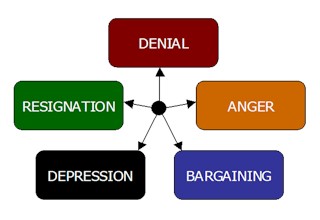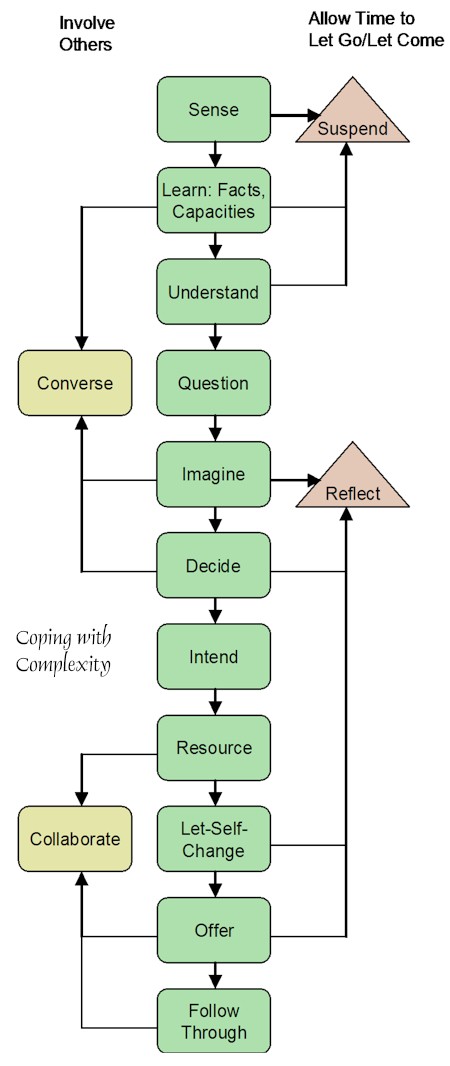 This article is a summary of a 45-minute presentation I’m now offering to various conference audiences. A couple of years ago, I shifted the focus of my consulting business from knowledge management (for which executive enthusiasm is definitely on the wane) to innovation. It didn’t take long before I realized the two are inseparable: Knowledge and imagination are the primary drivers of innovation in organizations. This article shows the connection between knowledge and innovation, and why KM competencies and capacities are essential to any organization aspiring to be innovative. I should probably start with a definition of innovation. Mine (adapted from the Doblin Group’s) is:
The world’s most innovative companies, such as WL Gore, have created processes, systems, practices, and organizational structures that enable them to innovate continuously, as part of their organizational culture. Such companies are, alas, few and far between. But they are also, not coincidentally, among the world’s most knowledgeable companies: knowledgeable about how the world works and what’s happening in markets and sciences and arts far removed from their core business. They are less concerned with what is happening in their own markets and industries because they are leaders — their competitors are constantly kept off-guard by their innovations and struggling to know what these innovators know. Copycat products, repackaged products and incremental improvements are not innovation. This chart summarizes the high-level complex-system innovative process (understanding; engaging customers, co-workers and communities; organizing; imagining; designing; experimenting; realizing; and, throughout these other seven steps, continuously paying attention, listening, observing, exploring, discovering, inquiring and canvassing) that most innovative companies use. Knowledge continually informs each of these eight steps in the process. This chart contrasts the information flow in traditional organizations (top) versus innovative organizations (lower graphic). Innovative organizations are constantly scanning broadly for new ideas that can be adapted for innovative purposes. Their ‘information professionals’ job is to ‘make sense’ of the information from both primary (interviews and surveys) and secondary (Internet and information media) sources. These organizations share what they learn as a matter of course, in the knowledge that sometimes brilliant innovations come from serendipitous learnings. And these organizations engage their customers in continuous dialogue, to co-develop solutions through a knowledge exchange of needs and ideas. The graphic at the top of this articles represents the knowledge-powered innovation process we helped put in place at one of our clients. This client was facing fierce competition from inexpensive offshore manufacturers, and they knew that if they didn’t innovate they would die. The process includes these twelve key components, most of which are knowledge-driven:
The final step in the innovation process is the rigorous stage-gating process (to ensure the ideas, no matter how intriguing, are strategic and economically feasible), and an equally rigorous commercialization process, to take the successful ideas from the drawing board into reality and operation. I think it’s pretty clear that good knowledge processes and resources are not only advantageous, but absolutely essential, to most of the twelve innovation activities described above. |
Navigation
Collapsniks
Albert Bates (US)
Andrew Nikiforuk (CA)
Brutus (US)
Carolyn Baker (US)*
Catherine Ingram (US)
Chris Hedges (US)
Dahr Jamail (US)
Dean Spillane-Walker (US)*
Derrick Jensen (US)
Dougald & Paul (IE/SE)*
Erik Michaels (US)
Gail Tverberg (US)
Guy McPherson (US)
Honest Sorcerer
Janaia & Robin (US)*
Jem Bendell (UK)
Mari Werner
Michael Dowd (US)*
Nate Hagens (US)
Paul Heft (US)*
Post Carbon Inst. (US)
Resilience (US)
Richard Heinberg (US)
Robert Jensen (US)
Roy Scranton (US)
Sam Mitchell (US)
Tim Morgan (UK)
Tim Watkins (UK)
Umair Haque (UK)
William Rees (CA)
XrayMike (AU)
Radical Non-Duality
Tony Parsons
Jim Newman
Tim Cliss
Andreas Müller
Kenneth Madden
Emerson Lim
Nancy Neithercut
Rosemarijn Roes
Frank McCaughey
Clare Cherikoff
Ere Parek, Izzy Cloke, Zabi AmaniEssential Reading
Archive by Category
My Bio, Contact Info, Signature Posts
About the Author (2023)
My Circles
E-mail me
--- My Best 200 Posts, 2003-22 by category, from newest to oldest ---
Collapse Watch:
Hope — On the Balance of Probabilities
The Caste War for the Dregs
Recuperation, Accommodation, Resilience
How Do We Teach the Critical Skills
Collapse Not Apocalypse
Effective Activism
'Making Sense of the World' Reading List
Notes From the Rising Dark
What is Exponential Decay
Collapse: Slowly Then Suddenly
Slouching Towards Bethlehem
Making Sense of Who We Are
What Would Net-Zero Emissions Look Like?
Post Collapse with Michael Dowd (video)
Why Economic Collapse Will Precede Climate Collapse
Being Adaptable: A Reminder List
A Culture of Fear
What Will It Take?
A Future Without Us
Dean Walker Interview (video)
The Mushroom at the End of the World
What Would It Take To Live Sustainably?
The New Political Map (Poster)
Beyond Belief
Complexity and Collapse
Requiem for a Species
Civilization Disease
What a Desolated Earth Looks Like
If We Had a Better Story...
Giving Up on Environmentalism
The Hard Part is Finding People Who Care
Going Vegan
The Dark & Gathering Sameness of the World
The End of Philosophy
A Short History of Progress
The Boiling Frog
Our Culture / Ourselves:
A CoVid-19 Recap
What It Means to be Human
A Culture Built on Wrong Models
Understanding Conservatives
Our Unique Capacity for Hatred
Not Meant to Govern Each Other
The Humanist Trap
Credulous
Amazing What People Get Used To
My Reluctant Misanthropy
The Dawn of Everything
Species Shame
Why Misinformation Doesn't Work
The Lab-Leak Hypothesis
The Right to Die
CoVid-19: Go for Zero
Pollard's Laws
On Caste
The Process of Self-Organization
The Tragic Spread of Misinformation
A Better Way to Work
The Needs of the Moment
Ask Yourself This
What to Believe Now?
Rogue Primate
Conversation & Silence
The Language of Our Eyes
True Story
May I Ask a Question?
Cultural Acedia: When We Can No Longer Care
Useless Advice
Several Short Sentences About Learning
Why I Don't Want to Hear Your Story
A Harvest of Myths
The Qualities of a Great Story
The Trouble With Stories
A Model of Identity & Community
Not Ready to Do What's Needed
A Culture of Dependence
So What's Next
Ten Things to Do When You're Feeling Hopeless
No Use to the World Broken
Living in Another World
Does Language Restrict What We Can Think?
The Value of Conversation Manifesto Nobody Knows Anything
If I Only Had 37 Days
The Only Life We Know
A Long Way Down
No Noble Savages
Figments of Reality
Too Far Ahead
Learning From Nature
The Rogue Animal
How the World Really Works:
Making Sense of Scents
An Age of Wonder
The Truth About Ukraine
Navigating Complexity
The Supply Chain Problem
The Promise of Dialogue
Too Dumb to Take Care of Ourselves
Extinction Capitalism
Homeless
Republicans Slide Into Fascism
All the Things I Was Wrong About
Several Short Sentences About Sharks
How Change Happens
What's the Best Possible Outcome?
The Perpetual Growth Machine
We Make Zero
How Long We've Been Around (graphic)
If You Wanted to Sabotage the Elections
Collective Intelligence & Complexity
Ten Things I Wish I'd Learned Earlier
The Problem With Systems
Against Hope (Video)
The Admission of Necessary Ignorance
Several Short Sentences About Jellyfish
Loren Eiseley, in Verse
A Synopsis of 'Finding the Sweet Spot'
Learning from Indigenous Cultures
The Gift Economy
The Job of the Media
The Wal-Mart Dilemma
The Illusion of the Separate Self, and Free Will:
No Free Will, No Freedom
The Other Side of 'No Me'
This Body Takes Me For a Walk
The Only One Who Really Knew Me
No Free Will — Fightin' Words
The Paradox of the Self
A Radical Non-Duality FAQ
What We Think We Know
Bark Bark Bark Bark Bark Bark Bark
Healing From Ourselves
The Entanglement Hypothesis
Nothing Needs to Happen
Nothing to Say About This
What I Wanted to Believe
A Continuous Reassemblage of Meaning
No Choice But to Misbehave
What's Apparently Happening
A Different Kind of Animal
Happy Now?
This Creature
Did Early Humans Have Selves?
Nothing On Offer Here
Even Simpler and More Hopeless Than That
Glimpses
How Our Bodies Sense the World
Fragments
What Happens in Vagus
We Have No Choice
Never Comfortable in the Skin of Self
Letting Go of the Story of Me
All There Is, Is This
A Theory of No Mind
Creative Works:
Mindful Wanderings (Reflections) (Archive)
A Prayer to No One
Frogs' Hollow (Short Story)
We Do What We Do (Poem)
Negative Assertions (Poem)
Reminder (Short Story)
A Canadian Sorry (Satire)
Under No Illusions (Short Story)
The Ever-Stranger (Poem)
The Fortune Teller (Short Story)
Non-Duality Dude (Play)
Your Self: An Owner's Manual (Satire)
All the Things I Thought I Knew (Short Story)
On the Shoulders of Giants (Short Story)
Improv (Poem)
Calling the Cage Freedom (Short Story)
Rune (Poem)
Only This (Poem)
The Other Extinction (Short Story)
Invisible (Poem)
Disruption (Short Story)
A Thought-Less Experiment (Poem)
Speaking Grosbeak (Short Story)
The Only Way There (Short Story)
The Wild Man (Short Story)
Flywheel (Short Story)
The Opposite of Presence (Satire)
How to Make Love Last (Poem)
The Horses' Bodies (Poem)
Enough (Lament)
Distracted (Short Story)
Worse, Still (Poem)
Conjurer (Satire)
A Conversation (Short Story)
Farewell to Albion (Poem)
My Other Sites




 A couple of years ago, Robbins wrote an article in Harper’s called
A couple of years ago, Robbins wrote an article in Harper’s called 


 At a time of great distress and grief, the thought of having to speak to children about the loss of a loved one can bring on an unbearable additional anxiety. We no longer live in a world where children frequently witness death as a part of life, and so it is hard for them to grapple with, and hard on us to try to figure out how best to break such tragic news to them and help them through their own, unique stress and grief. They go through the same
At a time of great distress and grief, the thought of having to speak to children about the loss of a loved one can bring on an unbearable additional anxiety. We no longer live in a world where children frequently witness death as a part of life, and so it is hard for them to grapple with, and hard on us to try to figure out how best to break such tragic news to them and help them through their own, unique stress and grief. They go through the same 




